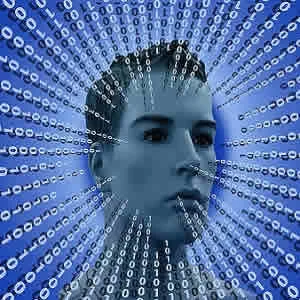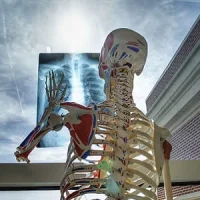The integration of machine learning/artificial intelligence into routine clinical practice will significantly alter the current practice of radiology. But rather than being a significant threat to radiologists, AI technology will be a boon to radiologists by increasing their value, efficiency, accuracy, and personal satisfaction, says an article in the Journal of the American College of Radiology.
You might also like: Improving Radiology with AI
Recent reports have warned that machine learning (ML) or artificial intelligence is a significant threat to radiologists and radiology as a speciality. However, rather than leading to the diminished significance of radiologists, "we believe that ML and artificial intelligence will enhance both the value and the professional satisfaction of radiologists by allowing us to spend more time performing functions that add value and influence patient care and less time doing rote tasks that we neither enjoy nor perform as well as machines," write Michael Recht, MD (Department of Radiology, NYU Langone Health, New York) and R. Nick Bryan, MD, PhD (Dell Medical School, The University of Texas at Austin) in the journal article.
Computers using traditional or more sophisticated ML algorithms will be highly beneficial to radiology, allowing radiologists to be more operationally efficient and diagnostically accurate. ML implies algorithms that can learn from and make predictions on the basis of new data. Whether a machine is taught or self-learns how to perform clinically useful interpretative tasks, the practical result is computer-assisted diagnosis and detection (CADD), according to Drs. Recht and Bryan.
In general, ML algorithms create a computational model on the basis of example inputs to derive data-driven predictions or decisions. In the case of radiology, the main decision-making task is one of classification: given the images and available clinical information, what is the most likely diagnosis?
The authors say there are innumerable CADD algorithms, many now using ML principles, that perform such classification tasks, though they differ in specific implementation, mathematical basis, and logical organisation. Regardless of the specific technology, they note, the value of CADD is dependent on how accurately a given application makes diagnoses. For example, ML algorithms incorporated into CADD products can now detect pulmonary nodules, diagnose colonic polyps, and screen for breast cancer.
Clinically validated ML technology integrated into radiology workflow will allow radiologists to more efficiently produce better quality reports. CADD will perform several functions currently performed by radiologists today, such as quantification, segmentation, and preliminary pattern recognition. These will serve to augment and aid, not replace, radiologists.
"In addition to regulatory challenges, there is the additional hurdle of patient acceptance of being treated and diagnosed by CADD rather than human physicians," the authors point out. "It will be much easier to have patients accept algorithms that aid physicians rather than those that eliminate and replace physicians."
The incorporation of CADD into routine clinical practice will also lead to a significant gain in radiologists’ efficiency. This gain will increase not only radiologists’ productivity but also their personal satisfaction, the authors say. This is because radiologists will be able to perform more value-added tasks, such as integrating patients’ clinical and imaging information, having more professional interactions, becoming more visible to patients, and playing a vital role in integrated clinical teams to improve patient care.
Source: Journal of the American College of Radiology
Image Credit: Pixabay
References:
Recht, Michael et al. (2017) Artificial Intelligence: Threat or Boon to Radiologists? Journal of the American College of Radiology. doi.org/10.1016/j.jacr.2017.07.007
Latest Articles
Radiologists, clinical practice, Artificial Intelligence, radiology.
The integration of machine learning/artificial intelligence into routine clinical practice will significantly alter the current practice of radiology. But rather than being a significant threat to radiologists, AI technology will be a boon to radiologists










